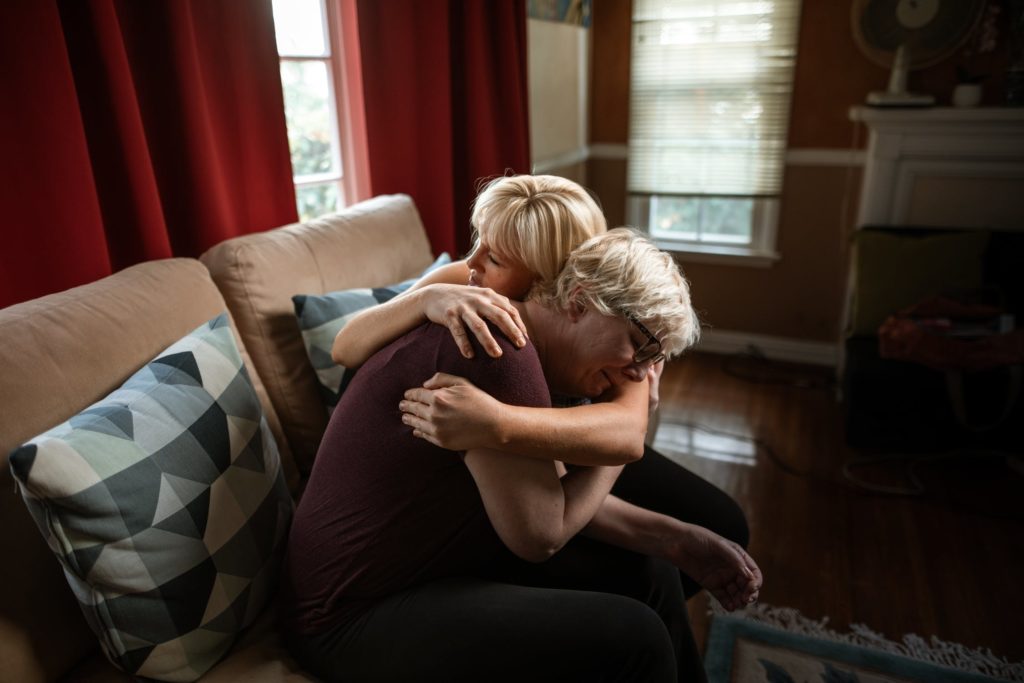When caring for an aging or seriously ill loved one, we always hope that they can be with us for a little longer. But there will always be the point where they might need hospice care services. This development might come as an abrupt change for them and their family. To avoid that, you should know the signs that it’s time. Let’s take a closer look at them and learn how you can prepare for that moment.

Understanding The Different Signs That Hospice Care Services Are Needed
One thing you should understand at this point is that every patient’s journey is different. As such, the need for end-of-life care might come at differing times. Knowing how to spot these signs will not only help you decide that it is time for hospice care services. You will also know what kind of care your loved one will need.
The Physical Signs
Your loved one’s declining physical health is arguably the most visible sign that it is time for them to receive hospice care. While medical conditions can vary, these common signs will be your first indicators.
Frequent Pains
Your loved one might be burdened increasingly by pain. Note that they might try to hide it from you at first. So you would need to observe them for signs that they are having a hard time managing their pain. This situation might include them not responding well to normal treatment anymore.
Frequent Hospitalizations
As their condition worsens, your loved ones might also need more frequent trips to the hospital. These trips can vary from needing more intervention to manage symptoms to going to the emergency room often. They might also require treatments for increased infections.
Irregular Vital Signs
There are several common changes in vital signs that you also need to be aware of.
- Rapid breathing or chest congestion
- Reduced desire to eat and drink
- Significant changes in body temperature
- Loss of urinary or bowel control
- An increased amount of time sleeping
Note that these changes might not come out at the same time. However, even if a few of these appear at the moment, you should already weigh on the possibility of using hospice care services.
Difficulty In Performing Daily Tasks
Such conditions might include having a hard time getting out of bed, eating, or grooming themselves. Note that these conditions might not always indicate the end of life. But if your loved one is increasingly finding it hard to do more of such tasks, it might be time to make the decision.
Mental Or Emotional Signs
Having to go through a terminal illness or advanced stages of aging can also take a toll on the mental and emotional well-being of your loved one. In this case, they might start becoming more withdrawn from engaging in social activities. In the more extreme cases, they might also start staying away from family and close friends.
At this point, your loved one also starts behaving differently than you might be used to. Some things that they might start doing include:
- Saying things or making requests that are out of character for them
- Making apologies or saying goodbye to people
- Giving away their personal belongings
- Making funeral plans
You might sometimes dismiss such behavior as just signs of depression. But you need to listen carefully to what they are saying. This will help put them at ease, making it easier for everyone to transition into hospice care.
The Doctor’s Decision
While the final decision to come under hospice care services is up to the patient and their family, doctors might also make recommendations. This situation is often the case when they diagnose that the patient has only six months to live.
Such a diagnosis and recommendation can seem sudden for you. But remember that doctors have the expertise to make such calls. Also, keep in mind that entering into hospice care does not always mean that your loved one is already at death’s door. Going with the doctor’s decision can help them have a more peaceful stay.

Preparing For Going Into Hospice Care
Once you decide to put your loved one under hospice care services, it is time to prepare for the start of the care process. Your goal here is to help them transition into a more structured care program, something they might not be used to. The family should also be ready to embrace the changes that will come with that decision.
The Introductory Visit
The first step that you will go through is the introductory stage. You or other members of the family will request for the hospice to send a representative. Note that the visit and initial assessment are free of charge. You are also not obliged to sign up with the provider right away. This allows you to scout for different providers to find one that best fits your needs.
As for the visit itself, you will discuss with the representative your loved one’s condition. They will then give you a rundown of the service the hospice offers. If you do sign up for the service, the representative will also guide you in completing the admission process. Note that the provider might divide all this work into several visits.
After The Admission
Once you have completed all the paperwork for the admission, you will need to meet again with the hospice representative. During this time, you will discuss things like how often doctors and the other care staff will visit the patient. They will also provide you with a care plan that details things like the medication and medical equipment the patient needs.
Preparing The Facilities
If you are signing up for institutional hospice care services, the provider will also be the one to handle your loved one’s transfer to their facility. That includes transportation either through their ambulances or provided by a third party. They also prepare the room according to your requests.
On the other hand, if you opted for at-home hospice care, you will need to prepare your home accordingly. These include:
- Preparing your loved one’s bedroom: You will need to make way for things like medical equipment your loved one will use, and make the room comfortable overall.
- Preparing the bathroom: You might need to add accommodations like handles in the toilet and the walls that make it easier for the patient to use and access them.
- Overall cleanup: Be mindful of things like lighting, temperature, and excessive noise to make the home more comfortable.
- Caregiver accommodations: The family should get to know the assigned caregiver. You will also need to make sure that they can perform their task well during visits.
The hospice care service can provide you with custodians who help accomplish the preparations. They will typically come in a few days before the first caregiver visit.

Be Ready With The Best Hospice Care Services Available
Seeing the above signs might make you feel uneasy about your loved ones. But with the right hospice care provider, you can rest assured that they will have greater dignity during their last days. Sign up with Amavi and we will be ready to help your loved one get the best end-of-life care.
